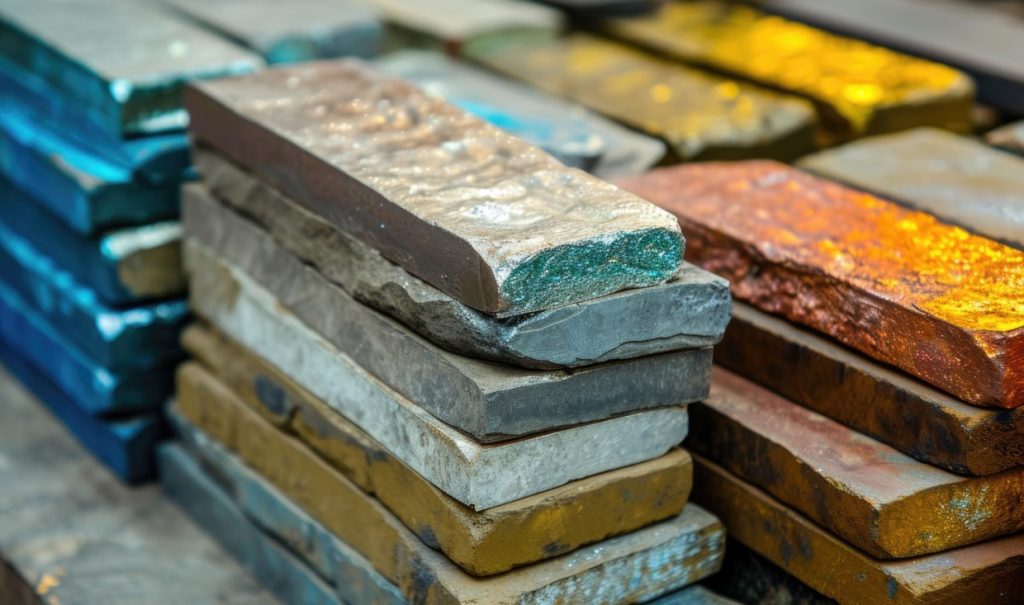Troy Minerals drills 1,495.9 ppm TREO over 5.40 metres at Lac Jacques, Quebec

Troy Minerals Inc. [CSE-TROY; OTCQB-TROYF; FSE-VJ3] reported results from the final two drill holes completed in Fall of 2023 at the Lac Jacques rare earth element (REE) property. The 100%-owned Lac Jacques property is located approximately 250km north of Montreal, Quebec, Canada and approximately 40km northeast of the town of St. Anne du Lac.
Hole LJ-23-03 intersected 2,526.1 ppm TREO (total rare earth oxides) over 2.90 metres from 53.0m-55.9m, including 3,627.9 ppm TREO over 0.9m.
Hole LJ-23-04 intersected 1,495.9 ppm TREO over 5.40m from 54.6m-60.0m, including 3,274.7 ppm TREO over 1.40m and 1,615.3 ppm TREO over 4.40m from 72.6m-77.0m, including 3,107.9 ppm TREO over 1.00 metre.
Drilling encountered multiple samples of anomalous REE concentrations near surface.
Results extended the mineralization to the southeast of structures intersected in previous 2 drill holes suggesting the presence of multiple mineralizing events in the area and potentially larger mineralized footprint.
Rana Vig, President and CEO, commented, “The final drill holes from the 2023 program returned strongly mineralized broad intervals as well as several narrow bands of anomalous mineralization. These results further cement our confidence in the REE potential at the Lac Jacques Property. Intersecting mineralization away from structures known to control mineralization leads us to believe there are several controls and sources of REE in the area as the footprint of mineralization continues to grow. We are designing our 2024 exploration campaign for Lac Jacques and look forward to sharing those plans with our investors in the coming weeks. The company has a strong treasury position and looks to further build shareholder value through organic growth across our portfolio of prospective projects located in Tier 1 jurisdictions while continuously looking for accretive M&A opportunities.”
Four drill holes were completed during the 2023 drill program. The program was intended to test below and along strike of the discovery trench.
LREO: Light rare earth oxides – Sum of concentration of rare earth oxides La2O3, CeO2, Pr6O11, Nd2O3, Sm2O3, Eu2O3
HREO: Heavy rare earth oxides – Sum of concentration of rare earth oxides Gd2O3, Tb4O7, Dy2O3, Ho2O3, Er2O3, Tm2O3, Yb2O3, Lu2O3, Y2O3
MREO: Magnet rare earth oxides Sum of concentration of rare earth oxides Pr6O11 and Nd2O3
TREO: Total rare earth oxides – Sum of LREO and HREO
Broadly, the ratio of LREO:HREO exhibits a distinct pattern with an overall enrichment (>10) of LREO in the upper half of the drill holes, above the gabbros, then decreasing to a much lower (<10) LREO:HREO below the gabbros.
Overall grades in these drill holes are less than in drill holes LJ-23-01 and -02. The major fault intersected in these holes was not intersected in the current drilling. Based on the projected orientation of the fault, drill holes LJ-23-03 and -04 are further south and east of the fault.
The company received the final report of the petrographic analysis of 16 core samples from drill holes LJ-23-01 and LJ-23-02. Analysis was performed by IOS Services Geoscientifiques Inc. of Saguenay, QC.
The objective of the analysis was to identify mineral assemblages and provide modal proportions of the minerals and chemistry.
A variety of REE-bearing minerals were identified, including allanite, fergusonite, monazite and unidentified REE-carbonates. Allanite is the principal REE-bearing mineral, with other sources comprising only very small modal percentages of the examined sample.
